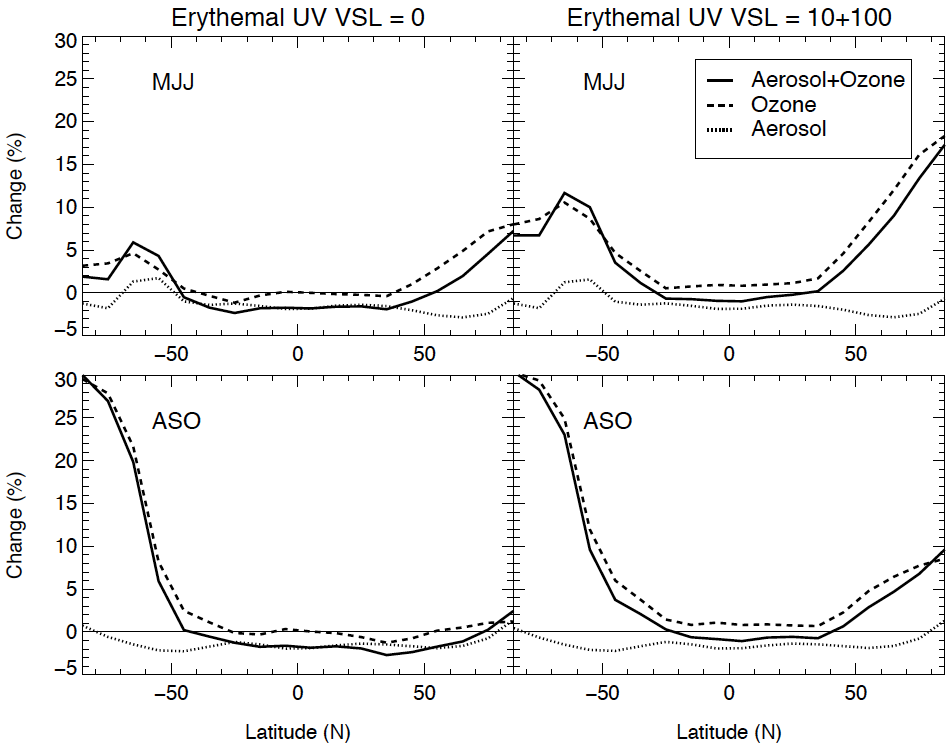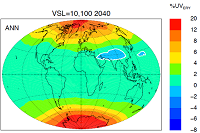Importance of very short-lived halogens for understanding the response of surface UV to geo-engineering of climate
A proposed method for geo-engineering climate involves the injection of sulfur into the tropical stratosphere. The resulting enhanced global stratospheric aerosol burden would reflect and scatter sunlight, reducing the Earth’s surface temperature and ultraviolet (UV) radiation intensity. Chemical reactions on the surface of aerosol particles would enhance heterogeneous reactions and alter the ozone abundance, which would change surface UV radiation. Tilmes et al., 2012, quantify the importance of very short-lived (VSL) halogenated source species on the ozone layer and surface erythemal ultraviolet radiation (UVERY) in a geo-engineered environment for year 2040. This study is the first to consider the effects of VSL halogens in the context of geo-engineering.
Depending on the assumed amount of VSL halogen species contributing to the total stratospheric halogen burden the consequences for UVERY can be profound. This study shows that when VSL halogen sources are neglected, the rise in future UVERY due to declines in ozone column are nearly balanced by reductions of UVERY due to increased scattering by the enhanced stratospheric aerosol burden. Consideration of VSL halogens at their upper limit, based on observations, tips the balance. The larger reduction in ozone columns combined with aerosol scattering results in an annual average increase in UVERY of up to 5% in mid and high latitudes. This study suggests geo-engineering of climate by sulfate injection could have deleterious effects on human health, by leading to a considerable rise in surface UVERY.

Figure: Changes in UVERY as a result of geo-engineering, assuming volcanic-sized aerosols for the year 2040. Changes of column ozone only (dashed lines), changes due to the enhanced volcanic-sized aerosol scattering only (dotted lines), and, consideration of both column ozone changes and enhanced aerosol scattering (solid). Results are shown for May, June, July (MJJ) and August, September, October (ASO), noontime conditions averaged over 10 degrees latitude bands. We consider simulations with two different amounts of VSL halogen species in the stratosphere (VSL = 0: left column, BryVSL = 10 ppt and ClyVSL = 100 ppt: right column).
Reference
S. Tilmes, D. E. Kinnison, R. R. Garcia, R. Salawitch, T. Canty, J. Lee-Taylor, S. Madronich, and K. Chance: Impact of very short-lived halogens on stratospheric ozone abundance and UV radiation in a geo-engineered atmosphere, Atmos. Chem. Phys., 12, 10945-10955, doi:10.5194/acp-12-10945-2012, 2012.
